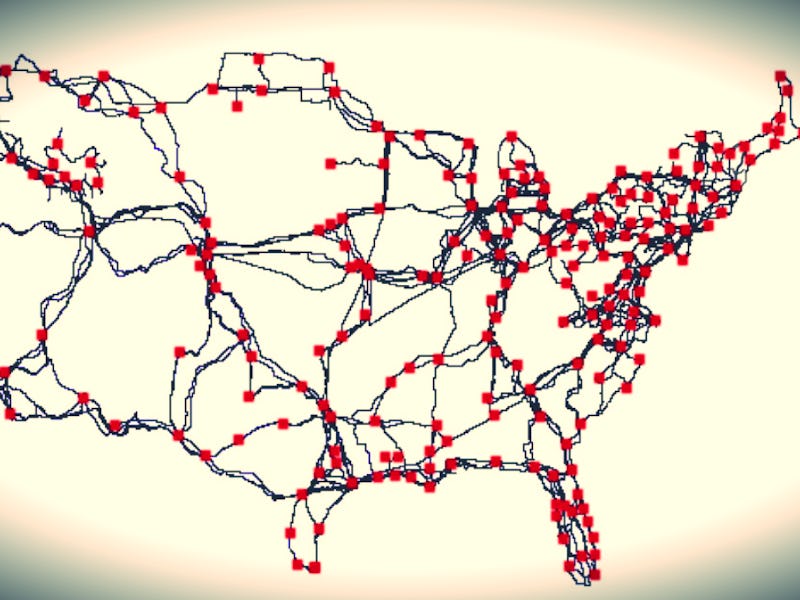Map Shows America's Internet Cables
The Department of Homeland Security is making the data public.

The internet seems like an omnipresent force, readily available for routine research, Tinder swipes, and witching-hour eBay purchases, as it springs up on networks across the globe. But for internet users in the developed world, the reality that the internet comes from long-distance fiber optic cables that careen for miles underground is easily forgotten.
These fiber optic networks belong to the world’s biggest telecommunications providers (Verizon, AT&T, Time Warner, Comcast, etc.) and for years have lent themselves to a certain air of susceptibility (not to mention debates about net neutrality) when it comes to natural disasters and cyber attacks, largely because we had no large-scale rendering of the network’s winding and interlaced nature.
Enter University of Wisconsin Professor of Computer Science Paul Barford and his team, who just compiled the first publicly available map of the United States’ sprawling internet foundation.
Barford thinks the map should help researchers and telecom providers better understand issues of network vulnerability when it comes to cyber-attacks and natural disasters. “Our intention is to help improve security by improving knowledge,” Barford told the MIT Technology Review. “I think the map highlights that there are probably many opportunities to make the network more robust.”
The Department of Homeland Security has also been trumpeting Barford’s project as part of its PREDICT initiative, which tabulates data on internet security relevant to the public and private sectors.
Barford and his crew spent four years combing public records for various telecoms company construction permits — the kind providers must obtain before digging up the earth to install fiberoptic wires underground — and came away with the rather simplistic map. Typically, heading to the city or county clerk’s office is the easiest way to find out where internet cables lie in your area, although there are always visual cues etched into the ground by various providers, which are usually spray-painted onto pavement in their own discreet way.
They often look like this: